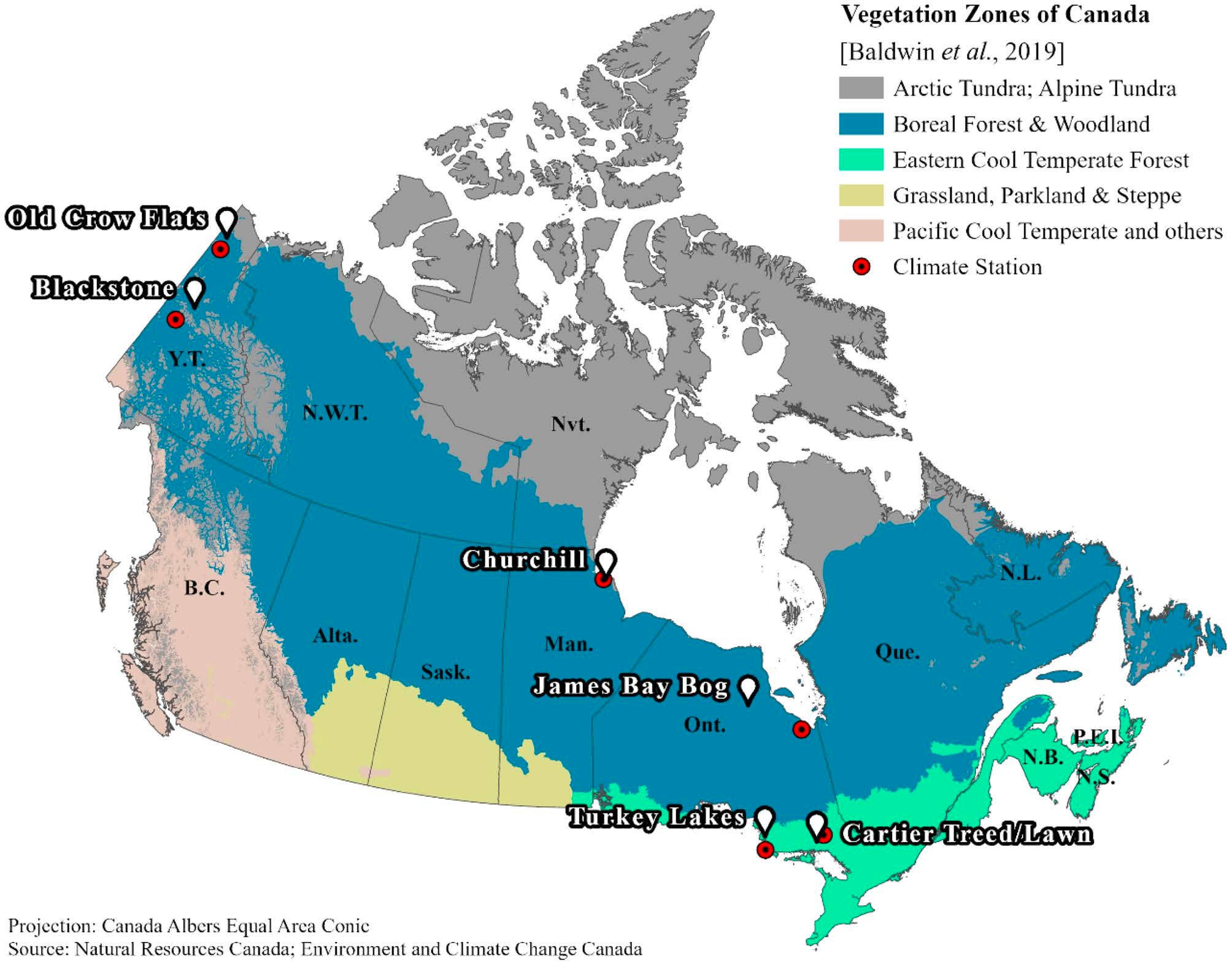A new paper, co-authored by Water Institute members Fereidoun Rezanezhad, Philippe Van Cappellen and Jonathan Price, along with Ecohydrology Research Group researchers Eunji Byun, Linden Fairbairn and Steph Slowinski, has been published in Nature’s Scientific Reports. The paper is entitled “Temperature, moisture and freeze-thaw controls on CO2 production in soil incubations from northern peatlands” and assesses the impact of climate warming on carbon emissions from Canada’s peatland ecosystems, particularly in the non-growing season.
In this study, CO2 production rates were measured in laboratory incubations with soils from seven Canadian peatland sites in the boreal and temperate bioclimatic vegetation zones (or ‘ecoclimates’).
Peat soils were pretreated for different soil moisture levels, and CO2 production rates were measured at 12 sequential temperatures, covering a range from − 10 to + 35 °C including one freeze–thaw event.

Figure 1. The locations of peatland sites across different vegetation (ecoclimate) zones of Canada (Baldwin et al. 2019) with the nearest weather stations (circles) for which Canadian Climate Normals 1981–2010 data are available (Environment and Climate Change Canada). The map was created using ArcGIS Pro (Esri).
The results of this study show sharp variations in the temperature sensitivity of peat soil CO2 production rates between the cold-temperate and boreal ecoclimate zones.
In combination with spatial and seasonal patterns of global warming, boreal peatlands may therefore increase future non-growing season CO2 losses to a larger degree than temperate peatlands.
“Winter is a critical period for carbon cycling in peatlands
and climate warming will increase winter carbon loss in Canadian peatlands,” said professor Rezanezhad.
The new findings highlight that the variable temperature sensitivities under different climate conditions need to be accounted for when assessing future global trajectories of peatland carbon pool stability.
The study was part of the “Winter Carbon Losses in Wetland Ecosystems under Current and Future Climates” project within the “Advancing Climate Change Science in Canada” initiative funded jointly by Environment and Climate Change Canada, Natural Sciences and Engineering Research Council (NSERC), and Health Canada. Results will be integrated into the Canadian Model for Peatlands (CaMP) to improve national estimates of net ecosystem exchanges and carbon emissions during the non-growing season.
Read the full article here.
Photo by K B on Unsplash